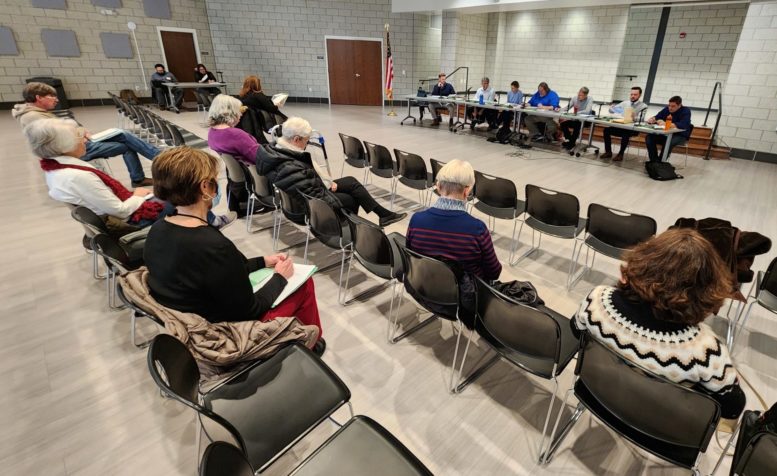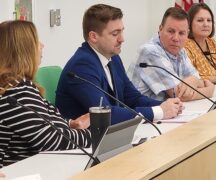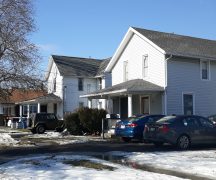By JAN LARSON McLAUGHLIN
BG Independent News
Bowling Green City Council split Monday evening on a vote to allow duplexes in all residential neighborhoods. After listening to citizen complaints for months, council voted Monday evening on whether or not to share the pain – or the privilege of duplexes.
The motion failed 3-4, with council members Jeff Dennis, Joel O’Dorisio and Nick Rubando voting in favor, and council members Bill Herald, Mark Hollenbaugh, Rachel Phipps and Greg Robinette voting against.
Rubando proposed the permitting of duplexes in all areas of the city – rather than just in the older neighborhoods surrounding the downtown. The duplexes could act as incentives for landlords to fix up their dilapidated properties, he said.
“This will force landlords to offer a better product,” Rubando said. And it would “share the responsibility through the entire community.”
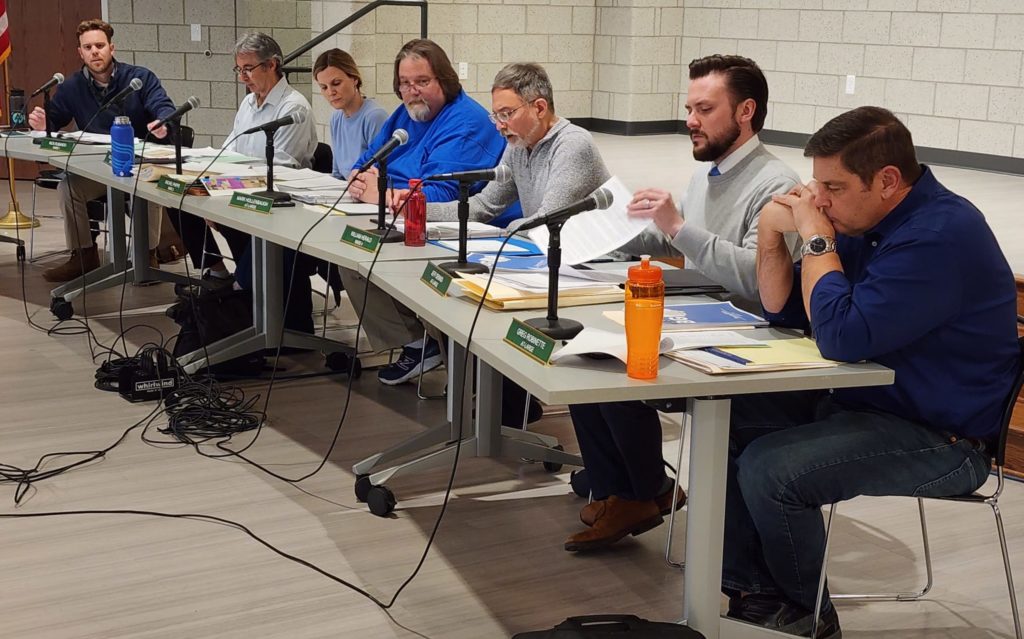
Last week, City Council heard from several citizens of the older neighborhoods around the downtown, wondering why their area of town was the only one being subjected to the new zoning rules which allow some businesses to locate next to homes, and makes way for duplexes.
Herald clarified that when people asked why they were being targeted by the new zoning, they weren’t suggesting that the new zoning be expanded throughout the city.
“That was sarcasm,” Hollenbaugh agreed.
But Rubando maintained that zoning that is good for the city in one neighborhood, is good for all neighborhoods.
“I tried,” he said.
The area in question covers approximately 104 residential blocks surrounding Bowling Green’s central business district, stretching from Poe Road to Napoleon Road. The goal is to maintain and preserve the walkable neighborhoods surrounding downtown by allowing limited types of small businesses and more diverse housing options.
The current zoning code has no place for duplexes – skipping from single-family homes up to multi-family. The change would accommodate duplexes.
Later in the meeting, City Council returned to the possibility of allowing two-unit dwellings in R-1 zoning.
“I think it’s something worth considering,” Dennis said.
Hollenbaugh noted that nothing is set in stone until the final reading and vote on the zoning update.
Several council members said their first homes in Bowling Green were rentals, with Rubando currently renting a home. Herald said his first home was a duplex, but he said the zoning allowing two-unit homes should not cover every neighborhood. “It depends on what part of town it’s in,” he said.
Phipps pointed out that the zoning code update is the product of a “shared vision” created by multiple planning documents for the community. “We do all this planning so our city is not at the whim of people elected every two years,” she said.
Rubando returned to his question of how the zoning change can be good for the older neighborhoods around the downtown, but bad everywhere else.
“Why wouldn’t it make a positive impact everywhere else?” he asked.
When a vote was called on allowing duplexes in R-1 areas of the city, only Dennis and Rubando voted in favor.
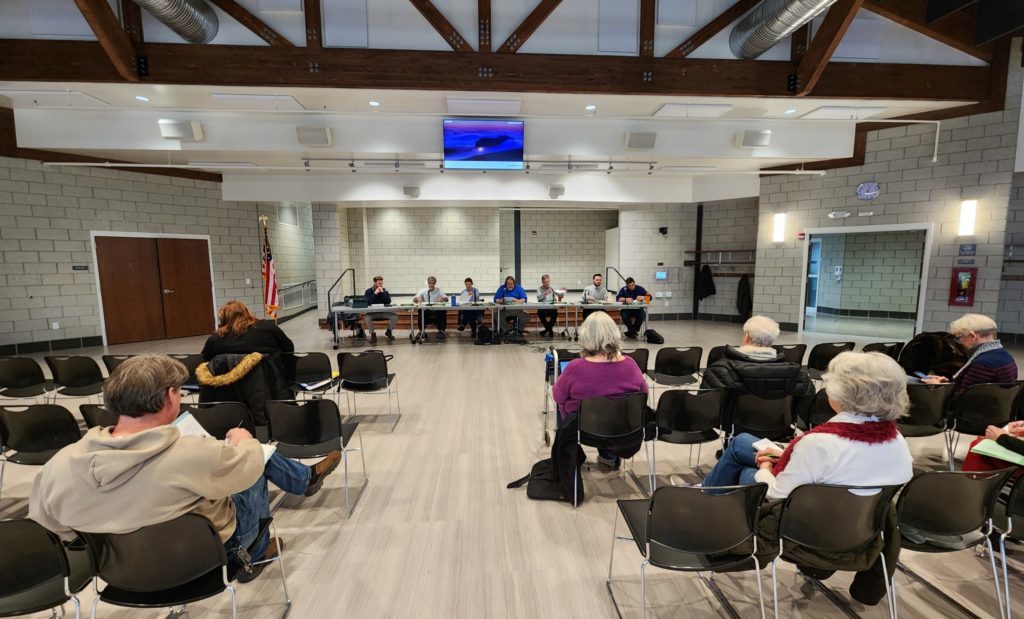
Bowling Green City Council spent two hours going over the nuts and bolts of the zoning code update. A few diehard citizens sat by quietly, with no public comment taken during Monday’s meeting.
Council had already accepted a zoning proposal from Phipps and Dennis that offered a compromise approach to the original Pedestrian Residential zoning as part of the city’s overall zoning code update. Their proposal cut back on the types of businesses that would be allowed in the neighborhoods, and represented a middle ground between the initial plan and a citizen-initiated zoning proposal.
So on Monday, Herald went through the proposals line by line where the compromise zoning plan differed with the citizen-initiated proposal.
- One of the controversial provisions of the zoning would allow for 80% lot coverage by residences – higher than most residential areas, but in line with many of the homes in the older neighborhoods that were built prior to the city’s first zoning code in 1975. The citizen’s proposal sought a 60% lot coverage standard. Council would not go as low as 60%, but voted unanimously to compromise with 70%.
- Several motions died for the lack of a second, including those to change from conditional uses to not-permitted uses for barbershops, beauty shops, spas; accessory dwelling units; day care centers; mortuaries or funeral homes; places of worship; retail services; primary, secondary or vocational schools;.
- Council did not accept the proposal that professional properties be moved from permitted to non-permitted uses. “We have several professional offices scattered throughout the community,” Dennis said. And O’Dorisio noted the growing number of people working from their homes since Covid.
- Council agreed to address the issue of bed & breakfast sites after the zoning code update is approved.
Council also agreed to ask ZoneCo, the city’s zoning consultant, to draw a map identifying the properties in the blocks surrounding the downtown that are currently zoned light manufacturing or business. That existing zoning would allow for inappropriate businesses in residential areas, such as hotels, household appliance manufacturers and mobile home parks.
So under the new plan, those pockets of manufacturing and business zoning would allow residential uses. The specifics of the zoning code could also set architectural design standards so any new buildings do not detract from the surrounding neighborhood.
Mayor Mike Aspacher said Monday evening that he supports the new zoning for those areas. “This is really a more appropriate zoning approach,” he said. “It will allow us to observe outcomes.”
What’s next?
Legislation will now be drawn up to reflect the latest decisions made by City Council on Monday evening.
City Council will be required to have three readings of the ordinance at three separate meetings, giving residents three more opportunities to share their feelings before the zoning update is voted on. A public hearing will also be required.
For information regarding the Zoning Code Updates, see the city’s website: www.bgohio.org/zoningcodeupdate

